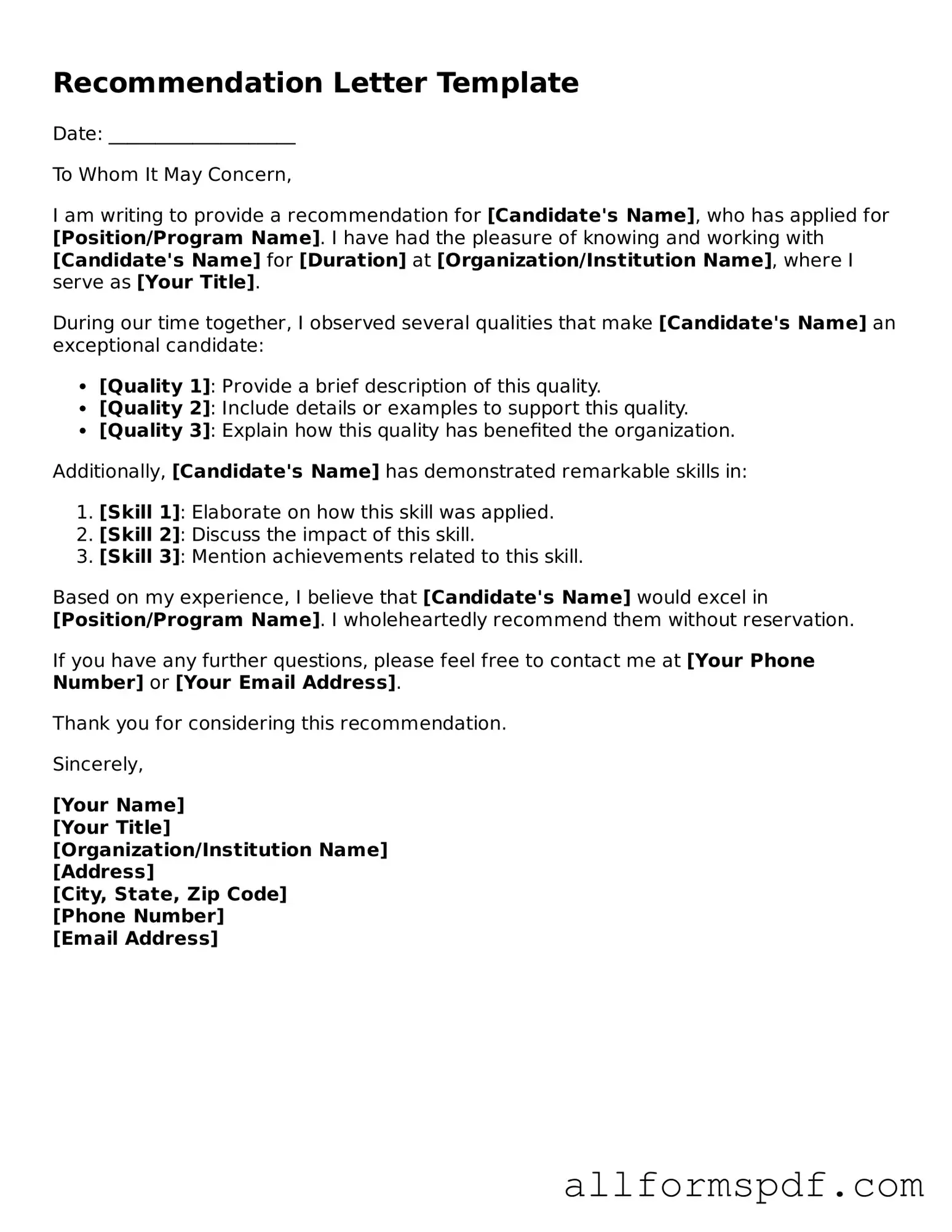Filling out a Recommendation Letter form can be a straightforward task, yet many individuals make common mistakes that can undermine the effectiveness of the letter. One prevalent error is failing to provide specific examples of the candidate's skills and achievements. Instead of offering vague praise, it is essential to highlight particular instances where the candidate excelled. This not only adds credibility but also paints a clearer picture of their capabilities.
Another frequent mistake is neglecting to address the letter to a specific person or organization. A generic greeting can come off as impersonal and may suggest a lack of effort. Whenever possible, research the recipient's name and title. Personalizing the letter demonstrates genuine interest and respect for the reader.
Many people also overlook the importance of maintaining a professional tone throughout the letter. While it's natural to want to convey warmth and enthusiasm, excessive informality can detract from the letter's seriousness. Striking the right balance between professionalism and personal touch is crucial for leaving a positive impression.
Additionally, some individuals fail to proofread their letters thoroughly. Spelling and grammatical errors can diminish the letter's impact. Such mistakes may suggest a lack of attention to detail, which could reflect poorly on the candidate. Taking the time to review the letter can prevent these easily avoidable issues.
Another common oversight is not adhering to the required length of the letter. Some writers may either be overly brief or excessively lengthy. A concise yet informative letter is more likely to hold the reader's attention. Aim for clarity and brevity while ensuring all relevant points are covered.
In some cases, individuals may forget to include their own qualifications or relationship to the candidate. It is important to establish credibility as a recommender. By explaining how you know the candidate and your relevant experience, you can enhance the weight of your recommendation.
Furthermore, failing to tailor the letter to the specific opportunity can be detrimental. Each recommendation should reflect the unique qualities that align with the position or program in question. Generic letters may not resonate with the selection committee, making it essential to customize the content accordingly.
Finally, some writers might neglect to include their contact information. Providing a way for the recipient to reach out for further clarification or additional information is vital. It demonstrates openness and willingness to support the candidate further, reinforcing the strength of the recommendation.
